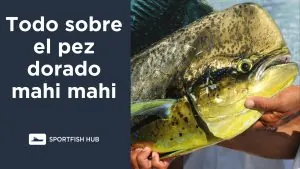With their distinctive sword-like bills, swordfish are equipped for slashing and impaling prey. This raises another question – are swordfish bottom feeders that hunt along the seafloor?
Swordfish Hunt Throughout the Water Column
Swordfish do not restrict their hunting to just the bottom of the ocean. Instead, they feed on prey throughout the water column from the surface to over 3,000 feet deep.
- As juveniles, swordfish start by eating tiny zooplankton near the surface. This allows them to take advantage of the abundant planktonic food source.
- As swordfish grow, they graduate to hunting fish and squid. Their diverse diet includes fish like mackerel, barracuda, hake, anchovies, and herring. Squid are also a key prey item.
- Adult swordfish are opportunistic predators that hunt wherever prey is abundant. This includes both surface waters and great depths.
- Using specialized tissues that keep their eyes and brains warm, swordfish can dive deep in cold waters to find prey. This allows them to hunt throughout the water column.
Swordfish Primarily Eat Mid-Water Prey
The majority of swordfish prey consists of mid-water species that inhabit open ocean habitats, rather than bottom dwellers.
- Adults mainly consume pelagic fish like mackerel, barracuda, and herring that dwell in the water column. They are not bottom fish.
- Another key prey item is squid which are mid-water hunters. Squid move up and down in the water column and are an important swordfish food source.
- Even fish like hake that swordfish consume are typically schooling fish feeding in the open ocean, not bottom scavengers.
- Specialized sensing systems allow swordfish to detect prey in the dark mid-water depths where many of their prey species reside.
Swordfish Hunting Strategy Not Suited To Bottom Feeding
The swordfish’s hunting strategy and morphology is designed for swift attacks on individual prey in open water rather than scavenging along the bottom.
- With their sword-like bills and speed, they slash at prey to injure them during high-speed attacks. This is suited for open ocean hunting.
- Swordfish reach impressive speeds of over 60 mph during feeding strikes. This gives them the speed needed to chase down swift mid-water prey.
- They lack specialized adaptations like bottom-sensing barbels and mouthparts for sucking up prey that many true bottom feeders possess.
- Their large, streamlined shape makes them fast swimmers but less maneuverable along the bottom compared to flatfish or rays.
Conclusion
In summary, while swordfish will opportunistically consume any prey they encounter, they are primarily open ocean hunters rather than true bottom feeders. Their diet, hunting strategy, and adaptations favor feeding throughout the water column not just along the seafloor. Swordfish inhabit deep oceanic waters searching for energetically rich fish and squid to sustain their active, migratory lifestyle as apex predators.











